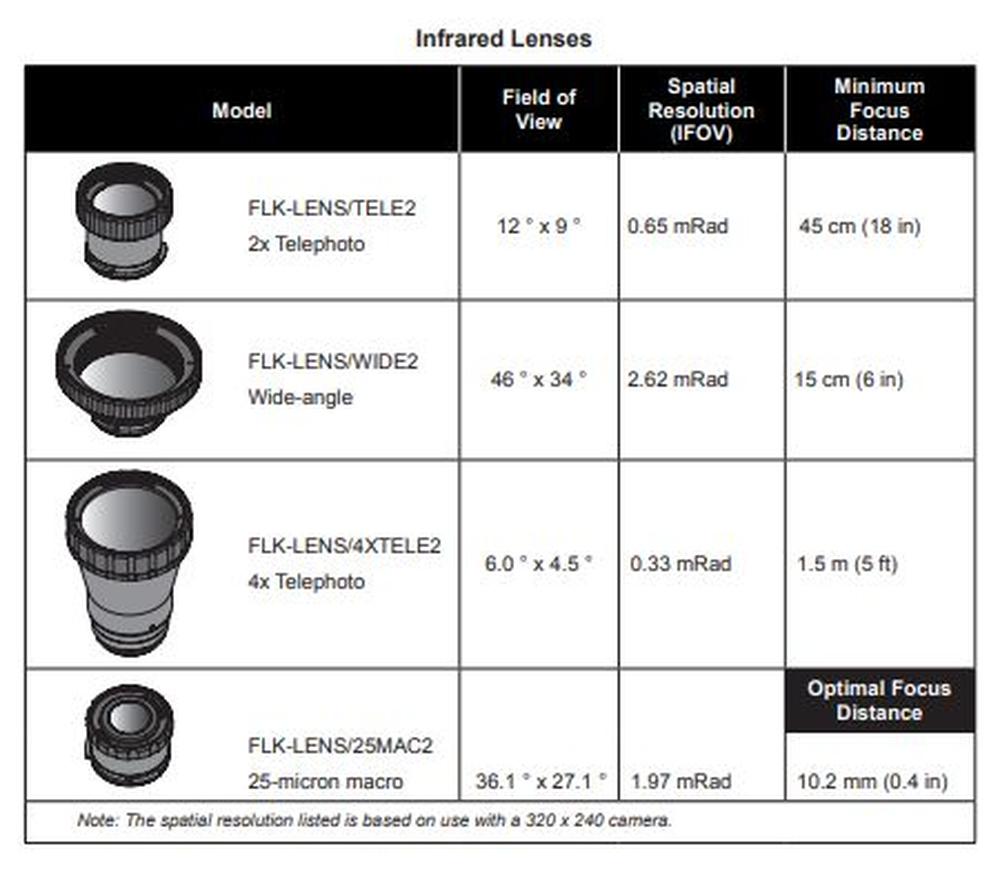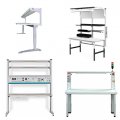Die Auswahl einer neuen Wärmebildkamera ist so wie der Kauf einer neuen gewöhnlichen Kamera. Das Grundmuster, die Technologien und die Logik des ganzen Konzepts sind sehr ähnlich. Wir verwenden eine Wärmebildkamera um Bilder zu machen, Videos aufzunehmen – genauso wie bei einer gewöhnlichen Kamera. Heute verwenden viele Menschen ein Smartphone, um schnell Fotos mit einer relativ hohen Qualität knipsen zu können. Profis wissen jedoch die sogenannten „Reflexkameras“ zu schätzen.
Was ist eine Wärmebildkamera und wie verhält es sich mit den entsprechenden wissenschaftlichen Grundlagen, der Infrarot-Thermographie und dem Thermogramm?
Infrarot-Thermographie
Es handelt sich hierbei um eine neue wissenschaftliche Disziplin, die sich mit der kontaktlosen Analyse von der Verteilung des Temperaturfelds auf einer Objektoberfläche beschäftigt. Die Aufgabe der Thermographie besteht darin, die von einem Objekt abgegebene Infrarotenergie zu analysieren.
Das thermographische Messsystem kann das Temperaturfeld des Messobjekts anzeigen, allerdings ausschließlich in Bezug auf die Objektoberfläche.
Wärmebildkameras
Sie ermöglichen es uns, die Infrarotstrahlung des Objekts zu sehen (Visualisierung). Durch die Wärmebildkamera wird ein Infrarotbild ausgegeben. Dieses wird als Thermogramm bezeichnet. Radiometrische Wärmebildkameras geben Benutzern die Möglichkeit, an jeder Stelle des Thermogramms die Temperatur bestimmen zu können.
Diese Bestimmung der Temperatur ist allerdings nicht einfach. Sie hängt von verschiedenen Parametern ab. Einer der wichtigsten Parameter ist der Emissionsgrad des Objekts. Ein ideales schwarzes Objekt hat einen Emissionsgrad von 1, glänzende Objekte haben einen sehr geringen Emissionsgrad (bis zu 0,1).
Thermogramm
Ein Infrarotbild ist ein Bild, das von einer Wärmebildkamera erzeugt worden ist. Infrarotstrahlung ist für das menschliche Auge nicht sichtbar.
Daher werden die Wärmebilder mithilfe von Farbpaletten sichtbar gemacht, die verschiedenen Temperaturen (unterschiedlichen Wärmeströmen) Farben zuweisen. Das gleiche Bild kann somit in verschiedenen Farbspektren angezeigt werden, um andere Bereiche hervorzuheben.
Wie kann die beste Wärmebildkamera ausgewählt werden?
Im Zuge der technischen Entwicklungen ist es mehr als hilfreich, den Überblick zu behalten, um Prozesse einfacher zu gestalten oder diese sogar ganz Tools oder Maschinen zu überlassen. Die Wärmebildkamera ist Ihnen hierbei zweifelsohne von Nutzen. Bevor wird uns den technischen Parametern zuwenden, ist es erforderlich, dass zwei grundlegende Punkte geklärt werden: 1. Wofür verwende ich die Wärmebildkamera?
Die Auswahl des Anwendungsbereichs ist der wichtigste Aspekt. Arbeite ich an Installationen von Elektrogeräten, an der Geräteentwicklung oder an Leiterplatten?
2. Was soll mir die Wärmebildkamera nutzen und was kann sie mir nutzen?
Wenn bereits bekannt ist, zu welchem Zweck die Wärmebildkamera dienen soll, dann haben wir ein paar Informationen für Sie, anhand derer Sie die beste Wärmebildkamera für Ihren Bedarf ermitteln können.
Form und Design passen ideal zur Tätigkeit
Die Standard-Wärmebildkamera kann mit einer Hand gehalten werden und ist in der Hand durch eine Lasche gesichert oder sie wird an einem Stativ montiert. Die Auswahl ist riesig. Geldbeutelgroße Modelle mit fester Basis, beständige Wärmebildkameras oder Miniaturmodelle, die mit einem Smartphone kombiniert sind.
Manche Modelle sind praktischer für den Transport, andere stellen eine stabilere Lösung dar.
Entfernung vom Messobjekt, Auflösung und Temperaturbereich
Die wichtigsten technischen Parameter, die gemessen werden sollen, sind:
- Entfernung vom Messobjekt (in Metern)
- Sensorauflösung (in Pixel)
- Temperaturbereich( in °C)
Die häufigsten Anwendungen sind:
- Messungen von Klimaanlagen oder von Wärmeverlusten in Gebäuden
- Messung von elektrischen Schaltanlagen
- Messungen an Leiterplatten (PCBs) mit SMD-Komponenten.
Klimaanlagen oder Gebäude:
Hierbei handelt es sich aus Sicht der heutigen „Minielektronik“ meist um große Geräte, sodass Messungen in ein paar Metern Entfernung zum Gerät ausreichen.
Die Temperatur entspricht in etwa Zimmertemperatur und die erforderliche Auflösung ist geringer als bei den anderen unten aufgelisteten Anwendungen. Darüber hinaus kann das Gerät einfach gehandhabt werden.
Messungen an elektrischen Schaltanlagen:
Auf den ersten Blick sieht man größere und kleinere Elemente, Teile (hier nachfolgend als Objekte bezeichnet). Es kann nicht ohne Weiteres bestimmt werden, ob große oder kleine Objekte über längere oder kürzere Entfernungen gemessen werden sollten. Hierzu wäre ein Universal-Instrument erforderlich.
Im Hinblick auf die Temperatur ist es möglich, bei den entsprechenden Objekten zerstörte Stellen oder Kurzschlüsse in der Schaltanlage zu erkennen. Wir gehen davon aus, dass in diesem Fall 100° C oder mehr erreicht werden können. Eine überaus nützliche Eigenschaft ist die Widerstandskraft gegenüber eventuellen Stößen und die generelle Beständigkeit des Geräts.
Messungen an Leiterplatten mit SMD-Komponenten:
Detailstufe und Empfindlichkeit sind die wichtigsten Parameter. Ein klare Erfassung von SMD-Komponenten mit Dimensionen von 1x0,5 mm ist eine schwierige, aber keinesfalls unmögliche Aufgabe. Die Messung findet auf einer Fläche von nicht mehr als 20 cm statt, wenn nicht die gesamte Leiterplatte gemessen werden soll.
Die Stromwerte betragen nicht, wie bei einer Schaltanlage, mehrere zehn Ampere, sodass ein Kurzschluss nicht solche drastischen Folgen hätte. Doch auch in diesem Fall kann eine Temperatur von 100° C erreicht werden. Das große Plus ist hierbei eine stabile Basis, welche die Möglichkeit für die Befestigung von Leiterplatte und Wärmebildkamera bietet.
Technische Parameter
Einfache Basisverteilung:
Sensorauflösung:
Die Auflösung entscheidet darüber, mit wie vielen Pixeln das entsprechende Objekt erfasst wird, d. h., je mehr Pixel, desto größer die Bildgenauigkeit und Messqualität. Die Begriffe Auflösung, Pixel, Seitenverhältnis haben Sie vielleicht schon im Zusammenhang mit den Bereichen Videoqualität oder TV-Auswahl gehört.
Die Auflösung beträgt üblicherweise 80x60 Pixel bis 640x480 Pixel bei einem Verhältnis von 4:3. Eine gute Auflösung für qualitativ hochwertige Bilder beginnt ab 160x120 Pixeln.
Es gibt 3 Gruppen in Bezug auf die Auflösung:
- 80x60 Pix., 120x90 Pix. Basisklasse
- 160x120 Pix., 220x165 Pix., 240x180 Pix. Mittelklasse
- 260x195 Pix., 320x240 Pix. und 640x480 Pix. Profiklasse
Die allgemeine Auflösung kann durch eine Superauflösung (Super Resolution) aufgebessert werden. Es handelt sich dabei um eine Softwareversion für Profiwärmebildkameras. All die genannten Auflösungen finden Sie auf unserer Webseite..
Temperaturbereich
Der Temperaturbereich reicht von Minusgraden (-25 ° C) bis zu mehreren Plusgraden. In unserem E-Shop finden Sie Wärmebildkameras für Plustemperaturen von + 150° C bis + 1200° C.
Wenn wir diese Temperaturbereiche in Gruppen einteilen, kristallisieren sich drei Gruppen heraus:
- Eine Basisklasse für bis zu 250° C
- Eine Mittelklasse für bis zu 650° C
- Eine Profiklasse für bis zu 1200° C
Entfernung vom Messobjekt, Fixfokus oder manueller Fokus:
Die Brennweite beträgt bei Basiswärmebildkameras mit Fixfokus üblicherweise 0,15 m oder 0,45m. Bei manuellem Fokus kann der Abstand manuell eingestellt werden (so wie auch die Linsen). Für High-end-Wärmebildkameras können folgende Objektive erworben werden:
- Makro-Objektive für Messungen am Prozessor,
- Weitwinkelobjektiv für Messungen an schwer erreichbaren Stellen
- Teleobjektiv mit 2x- oder 4x-Zoom für Messungen von netzunabhängiger Stromverteilung (in einem Verteilersystem).
Fixfokus - Basisklasse
Manueller Fokus 0,15-0,45m Mittelklasse
Jeweils mit Wechselobjektiv und manuellem Fokus - Profiklasse
Bildwinkel:
Dieser Parameter ist eng mit der Brennweite verbunden. Je größer die Brennweite, desto kleiner der Bildwinkel. Der Bildwinkel verhält sich umgekehrt proportional zur Entfernung vom Messobjekt. Wir bewegen uns vertikal in einer Skala von 24° bis 55°. Dieser Wert lässt sich durch eine Reihe von Objektiven grundlegend verändern.

Empfindlichkeit:
Einer der wichtigsten Parameter für genaue Messungen. Die Theorie besagt: „Die Temperaturempfindlichkeit gibt Aufschluss über die geringsten Temperaturunterschiede an der Oberfläche des schwarzen Körpers, die mit einer Wärmebildkamera erfasst werden können.
Je höher die Empfindlichkeit, desto genauer die Messung. “ Dieser Parameter steht im Verhältnis zum Auflösungswert, der durch den Hersteller ausgewählt wird, sodass Sie sich hinsichtlich der Auswahl zunächst nicht von Grund auf mit diesem Aspekt beschäftigen müssen. Dieser Parameter ist nicht so entscheidend wie die Auflösung oder der Temperaturbereich.
Emissionsgrad:
Der Emissionsgrad ist die optische Eigenschaft eines Materials, die beschreibt, wie viel Licht von einem Material im Verhältnis zu der Lichtmenge, die von einem schwarzen Körper bei gleicher Temperatur emittiert wird, abgegeben wurde. Ein schwarzer Körper ist ein Idealkörper, der sämtliche Strahlung absorbiert.
Gleichzeitig handelt es sich auch um einen idealen Wärmestrahler – die Strahlung des schwarzen Körpers ist maximal und hängt ausschließlich von der Temperatur ab. Die spektrale Verteilung der Strahlungsintensität des schwarzen Körpers ist durch das Plancksche Gesetz bestimmt.
Der Emissionsgrad wird an der Wärmebildkamera manuell eingestellt. Bei Basis- und Profiwärmebildkameras gibt es hierbei keinen Unterschied. (Tabelle zum Emissionsgrad) .
Freigabe Ihrer Arbeitstätigkeiten und weitere Funktionen:
Zusätzlich zu dem qualitativ hochwertigen Messergebnis gilt es, die gesamte Anwendung aus einem Blickwinkel abseits der Wärmebildkamera zu betrachten. Wie wird das Bild verarbeitet? Soll das Ergebnis an Kunden gesendet werden?
Arbeiten Sie in der Entwicklung und möchten Sie die Ergebnisse in Echtzeit auf Ihrem PC haben? Alle der oben genannten Ideen lassen sich umsetzen, um ein effektives Arbeiten zu erreichen.
Liste von PC-Software
Fluke Connect
Fluke SmartView
Flir Tools
Flir Tools+
und andere
Spezifische Produkte
Klimaanlagen oder Gebäude:Ein passendes Produkt aus unserem Sortiment ist die Flir C3. Sie bietet eine Auflösung von 80x60 Pixeln und einen Temperaturbereich von -10° C ... + 150° C. Die Brennweite beträgt 1m MSX von dem Messobjekt, festes Objektiv.
Von Vorteil sind der Touchscreen, die einfache Bedienung, die Größe des Geräts und die WiFi-Konnektivität in Kombination mit der PC-basierten Bildverarbeitungssoftware FlirTools. Ein Konkurrenzprodukt hierzu ist die Flir One Pro.
Im Hinblick auf die kleinere Struktur und Parameter übertrifft diese Wärmebildkamera die Flir C3, doch nachdem das thermographische Bild auf den PC gespeichert wurde, lässt es sich nicht mehr bearbeiten. Weitere Anwendungsbereiche: Solaranlagen, Lagerfeuchtigkeit, Wärmeableitung, Wärmeverteilung bei Festbrennstoffkesseln u.a.
Basislinie
Temperaturbereich: -10…+150°C
Auflösung: 80x60 pix.
Objektiv: Fest, kein Wechselobjektiv
Sonstiges: Touchscreen, WiFi, FlirTools
Warum ist die Reihe empfehlenswert?
- Kleine Größe und geringes Gewicht
von 130g
- Beständigkeit
- Wi-Fi + Flir Tools
Messungen an elektrischen Schaltanlagen:
Diese Wärmebildkamera ist universell einsetzbar. Die goldene Mitte. Fluke TiS 45 ist die erste Wärmebildkamera in dieser Kategorie mit manuellem Fokus. Mit diesem Gerät können Sie z. B. mühelos die elektrische Stromverteilung, die Wärmesteuerung von mechanischen Teilen oder die Motorsteuerung bewältigen. Bei der Linse handelt es sich nicht um ein Wechselobjektiv.
Mittellinie
Temperaturbereich: -20…+350°C
Auflösung: 160x120 pix.
Objektiv:Manuell, kein Wechselobjektiv
Sonstiges: Fluke Connect
Warum ist die Reihe empfehlenswert?
- Universell für Messungen einsetzbar
- Manuelle Einstellung von Brennweite
- Umfangreiches Zubehör inklusive werksseitige Kalibrierung
Messungen an Leiterplatten mit SMD-Komponenten:
Um genaue Messergebnisse zu erzielen, benötigen Sie in jedem Fall eine feste Basis oder ein Stativ. Die Flir ETS 320 liefert ausgezeichnete Ergebnisse in einer Entfernung von mehreren Millimetern. Aufgrund der Stabilität weist das Bild letztlich keine Unschärfe auf.
Mit dieser Wärmebildkamera können Sie zudem von Echtzeit-Trackings und -Aufzeichnungen profitieren. Daher eignet sich die Wärmebildkamera für Anwendungen, bei denen die Temperatur des Messgeräts zu einem bestimmten Zeitpunkt nach Einschalten des Geräts gemessen werden soll (Temperaturveränderungen an der PCB und die entsprechende Wechselwirkung).
Mittellinie
Temperaturbereich:-20…+250°C Auflösung: 320x240 pix.
Objektiv: Manuell, kein Wechselobjektiv
Sonstiges: Flir Tools, Echtzeit-Tracking
Warum ist die Reihe empfehlenswert?
- Feste Basis
- Bildübertragung in Echtzeit direkt auf den PC, Rückverfolgbarkeit
- Nicht auf Batterien angewiesen
Der größte Fehler bei der Auswahl und Verwendung der Wärmebildkamera:
Es kann nicht schaden, ein leistungsstarkes Gerät für nicht allzu spezifische Messungen zu verwenden. Ein Fehler ist jedoch, ein Gerät mit Basisparametern für anspruchsvollere Anwendungszwecke auszuwählen. Sie würden sicherlich nicht die VGA-Kamera Ihres Mobiltelefons auf einem Fotowettbewerb verwenden. Daher raten wir davon ab, SMD-Teile mit der Basisklasse von Wärmebildkameras zu messen, weil Sie keine zufriedenstellenden Ergebnisse erzielen würden.k to nie je možné, takúto technológiu (termovíziu) neodporúčame použiť.Ein weiterer Fehler ist die Messung von Glasoberflächen oder von extrem glatten und glänzenden Oberflächen. In diesem Fall kann sich der Kamerabediener bloß selbst mit der Wärmebildkamera in der Hand messen (Bildreflexion). Falls die Wärmebildkamera zur Messung solcher Oberflächen verwendet werden soll, bietet es sich an, das Messobjekt zu verdunkeln oder in sonstiger Weise aufzurauen. Falls dies nicht möglich ist, raten wir von der Anwendung dieser Technologie (Wärmesicht) ab.
Falls Sie es zum ersten Mal mit einer Wärmebildkamera zu tun haben, empfehlen wir Ihnen die Investition in eine Wärmebildkamera aus der Mittelklasse. Achten Sie bei der Auswahl der richtigen Kamera auf viele weitere Parameter, als nur die Auflösung und den Temperaturbereich.
Falls Sie Hilfe oder Rat benötigen, erreichen Sie uns über die E-Mail-Adresse verkauf@soselectronic.com
Gefallen Ihnen unsere Artikel? Verpassen Sie jetzt keine mehr! Sie müssen sich um nichts kümmern, wir arrangieren die Lieferung an Sie.
























